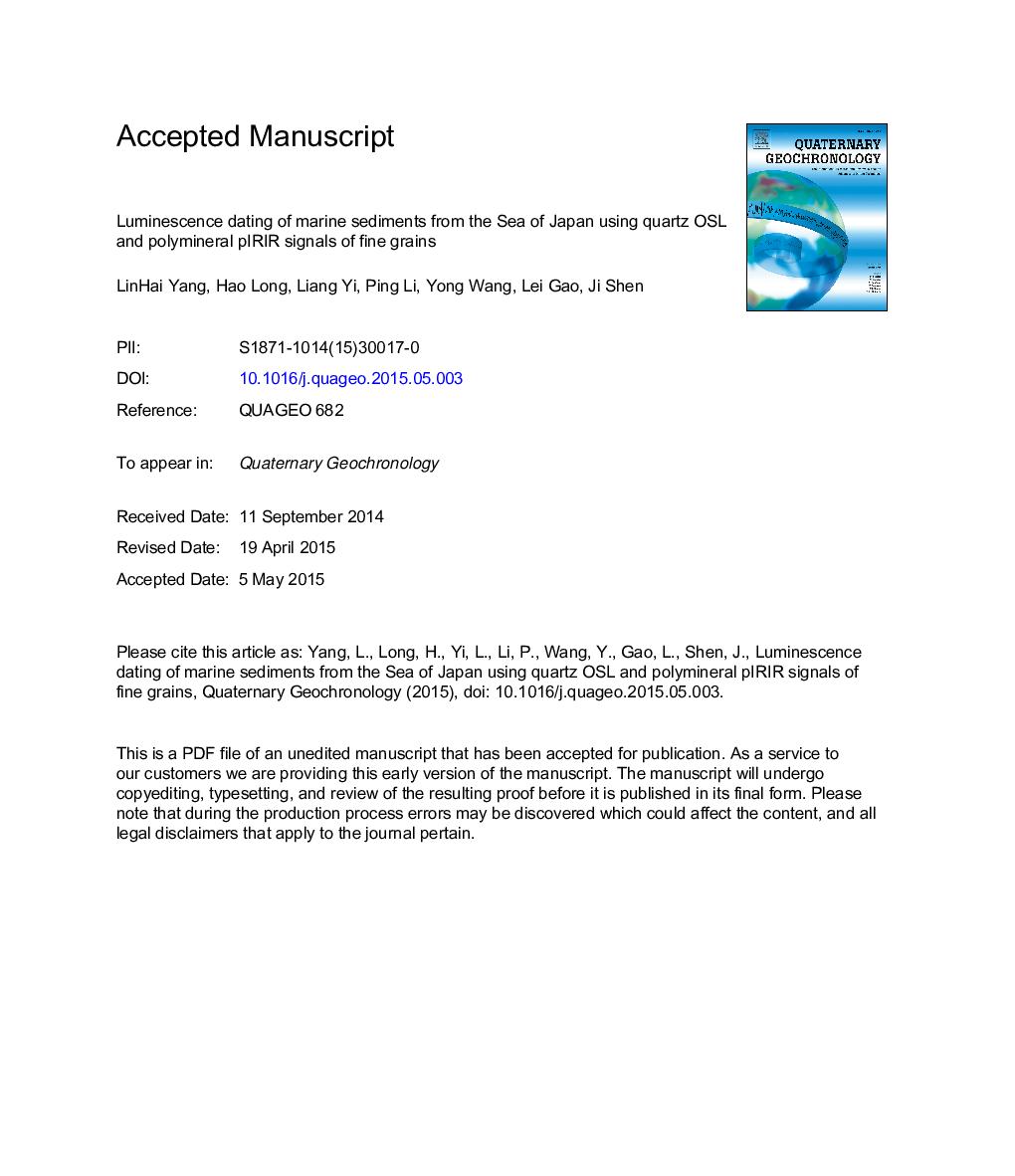| Article ID | Journal | Published Year | Pages | File Type |
|---|---|---|---|---|
| 6442557 | Quaternary Geochronology | 2015 | 27 Pages |
Abstract
Luminescence dating has long been used for chronological constraints on marine sediments due to the ubiquitous dating materials (quartz and feldspar grains) and its applicability over a relatively long time range. However, one of the main difficulties in luminescence dating on marine sediments is partial bleaching, which causes age overestimations. Especially, partial bleaching is typically difficult to be detected in the fine grain fraction (FG) of marine sediments. The recently developed feldspar post-IR IRSL (pIRIR) protocol can detect non-fading signals and thus avoid feldspar signal instability. In the current study, fine grains were extracted from a gravity core in the northern Sea of Japan, and the aim is to test the feasibility of using different luminescence signals with various bleaching rates to explore the bleaching conditions of fine grain fraction in marine sediments. The results suggest that the quartz OSL signal and polymineral pIRIR signals at stimulation temperatures of 150 °C and 225 °C (pIRIR150 and pIRIR225) of FG were well bleached prior to deposition. The OSL ages were used to establish a chronology for this sedimentary core and the resulting age-depth relationship is self-consistent and comparable with radiocarbon dates. We conclude that different luminescence signals with various bleaching rates can be used to test the bleaching conditions of fine grain fraction in marine sediments; and the luminescence dating can be applied to marine sediments with great potential.
Related Topics
Physical Sciences and Engineering
Earth and Planetary Sciences
Geochemistry and Petrology
Authors
LinHai Yang, Hao Long, Liang Yi, Ping Li, Yong Wang, Lei Gao, Ji Shen,
